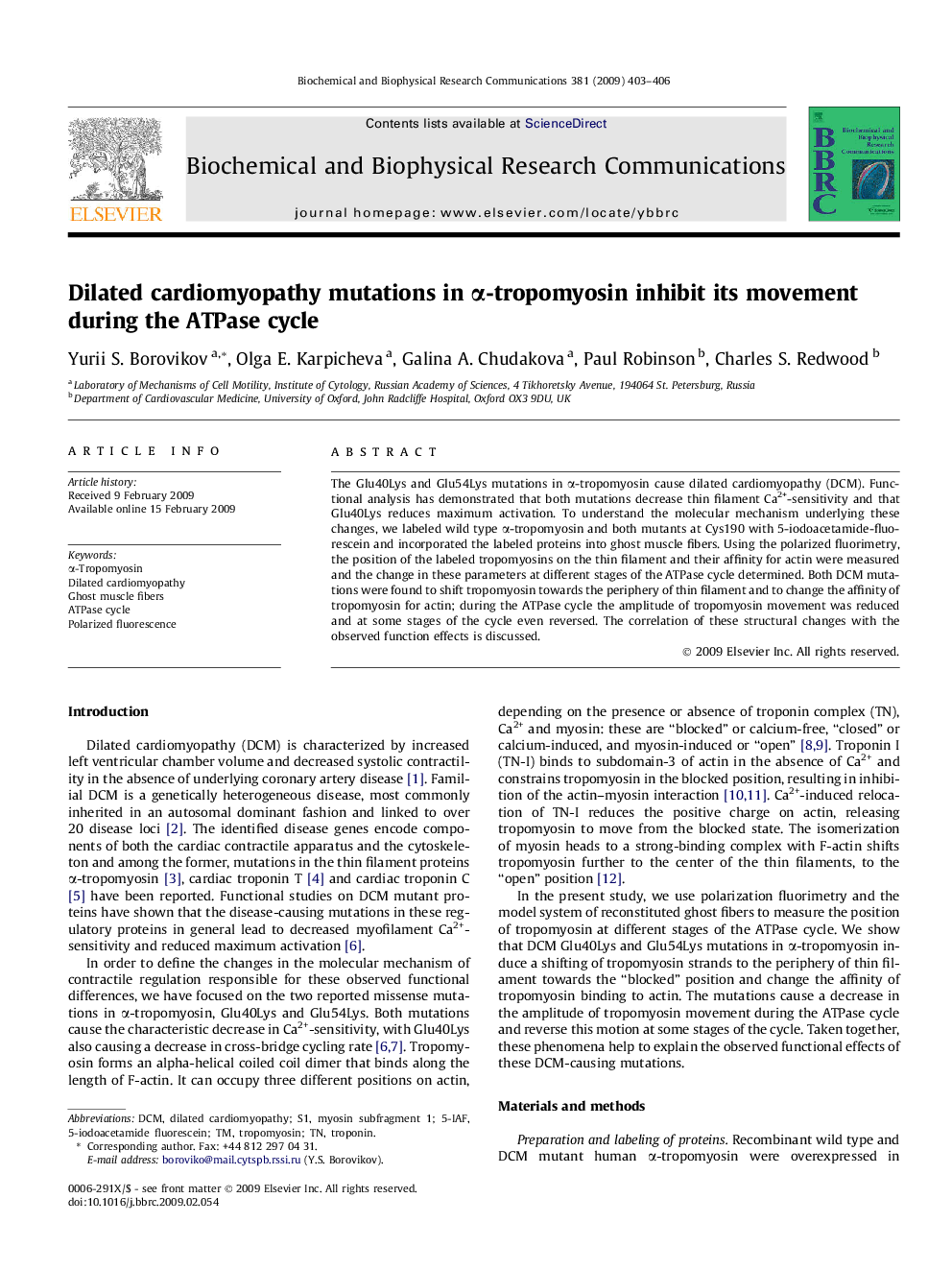| Article ID | Journal | Published Year | Pages | File Type |
|---|---|---|---|---|
| 1933468 | Biochemical and Biophysical Research Communications | 2009 | 4 Pages |
The Glu40Lys and Glu54Lys mutations in α-tropomyosin cause dilated cardiomyopathy (DCM). Functional analysis has demonstrated that both mutations decrease thin filament Ca2+-sensitivity and that Glu40Lys reduces maximum activation. To understand the molecular mechanism underlying these changes, we labeled wild type α-tropomyosin and both mutants at Cys190 with 5-iodoacetamide-fluorescein and incorporated the labeled proteins into ghost muscle fibers. Using the polarized fluorimetry, the position of the labeled tropomyosins on the thin filament and their affinity for actin were measured and the change in these parameters at different stages of the ATPase cycle determined. Both DCM mutations were found to shift tropomyosin towards the periphery of thin filament and to change the affinity of tropomyosin for actin; during the ATPase cycle the amplitude of tropomyosin movement was reduced and at some stages of the cycle even reversed. The correlation of these structural changes with the observed function effects is discussed.
